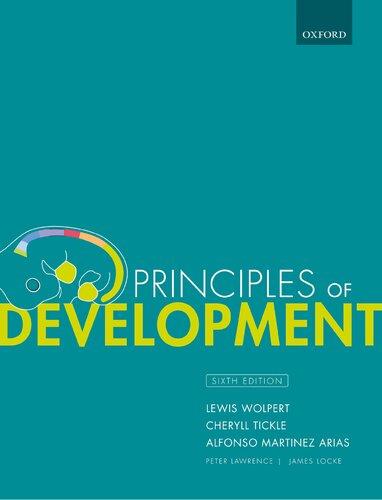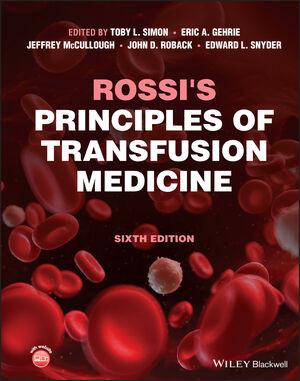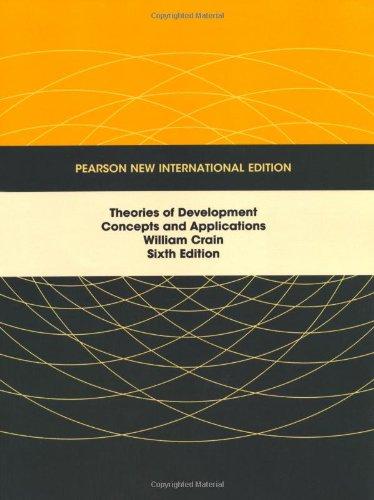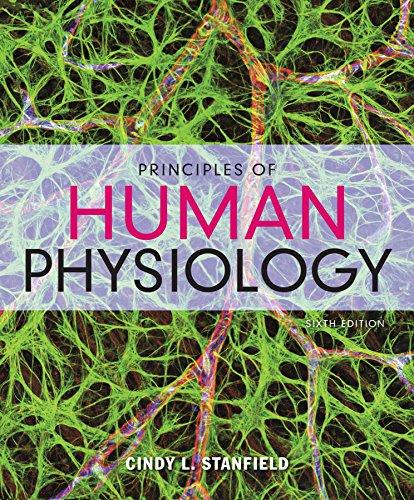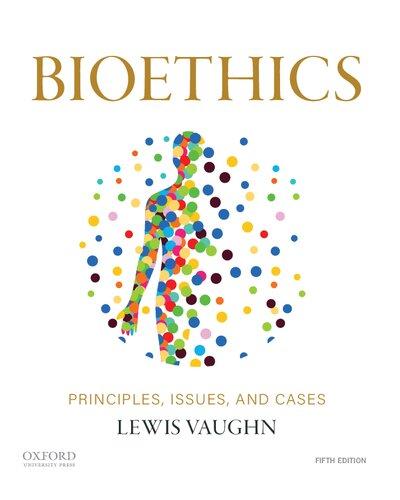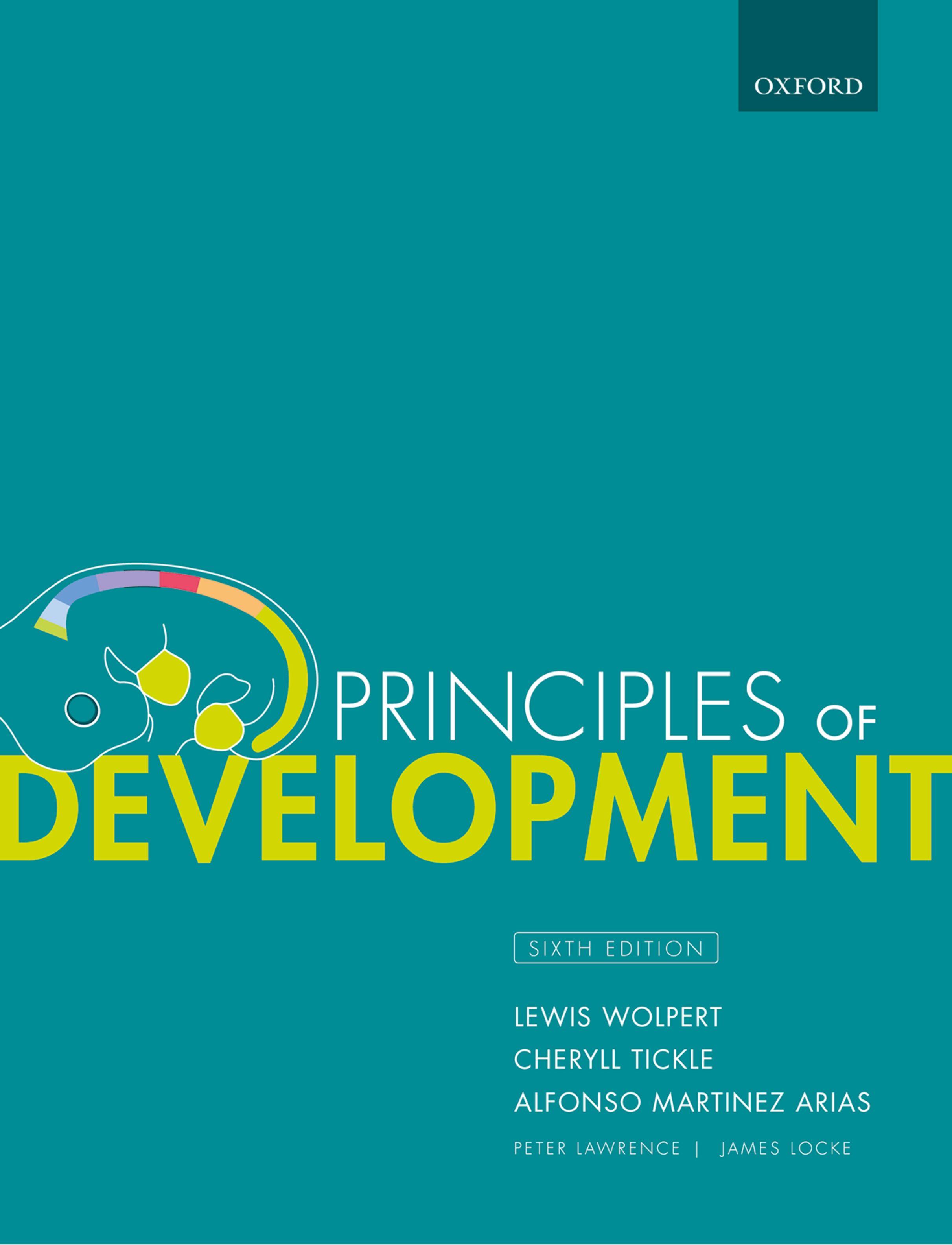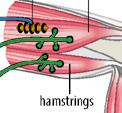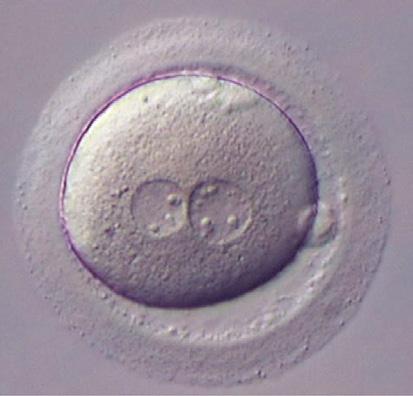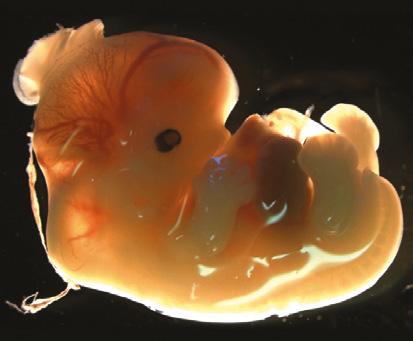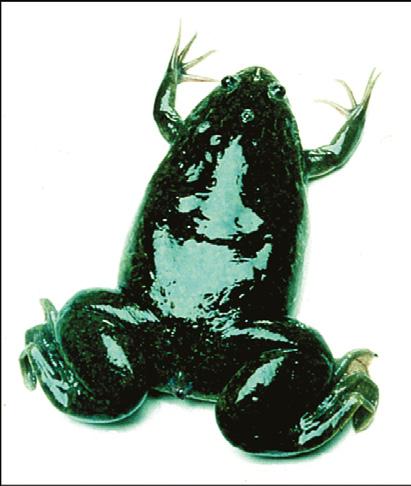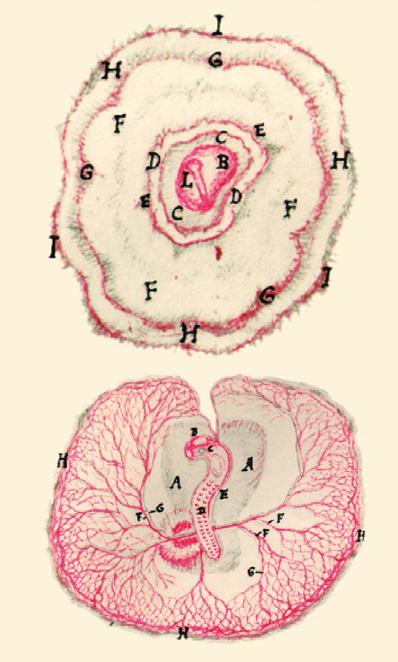Summary of contents
Chapter 1
Chapter 2
Chapter 3 Vertebrate development I: life cycles and experimental techniques
Chapter 4 Vertebrate development II: Xenopus and zebrafish
Chapter 5 Vertebrate development III: chick and mouse—completing the body plan
Chapter 6 Development of nematodes and sea urchins
Chapter 7 Morphogenesis: change in form in the early embryo
Chapter 8
Chapter 9
Chapter
Chapter 11
Chapter 12
of the nervous system
post-embryonic development, and regeneration
1.2 Cell theory changed how people thought about embryonic development and heredity
1.3 Two main types of development were originally proposed
1.4 The discovery of induction showed that one group of cells could determine the development of neighboring cells
Lateral inhibition can generate spacing patterns
Localization of cytoplasmic determinants and asymmetric cell division can make daughter cells different from each other
The embryo contains a generative rather than a descriptive program
The reliability of development is achieved by various means
The complexity of embryonic development is due to the complexity of cells themselves
2.3 After hatching, the Drosophila larva develops through several larval stages, pupates, and then undergoes metamorphosis to become an adult
2.4 Many developmental genes were identified in Drosophila through large-scale genetic screening for induced mutations
Experimental Box 2A Mutagenesis and genetic screening strategy for identifying
The body axes are set up
the Drosophila embryo is still
2.6 Maternal factors set up the body axes and direct the early stage of Drosophila development 46
2.7 Three classes of maternal genes specify the antero-posterior axis 47
2.8 Bicoid protein provides an antero-posterior gradient of a morphogen 48
2.9 The posterior pattern is controlled by the gradients of Nanos and Caudal proteins 50
2.10 The anterior and posterior extremities of the embryo are specified by activation of a cell-surface receptor 51
2.11 The dorso-ventral polarity of the embryo is specified by localization of maternal proteins in the egg vitelline envelope 52
2.12 Positional information along the dorso-ventral axis is provided by the Dorsal protein 53
■ Cell Biology Box 2B The Toll signaling pathway: a multifunctional pathway 54
Summary 54
Localization of maternal determinants during oogenesis 55
2.13 The antero-posterior axis of the Drosophila egg is specified by signals from the preceding egg chamber and by interactions of the oocyte with follicle cells 56
■ Cell Biology Box 2C The JAK–STAT signaling pathway 58
2.14 Localization of maternal mRNAs to either end of the egg depends on the reorganization of the oocyte cytoskeleton 58
2.15 The dorso-ventral axis of the egg is specified by movement of the oocyte nucleus followed by signaling between oocyte and follicle cells
2.16 The expression of zygotic genes along the dorso-ventral axis is controlled by Dorsal protein 62
2.17 The Decapentaplegic protein acts as a morphogen to pattern the dorsal region
2.18 The antero-posterior axis is divided up into broad regions by gap gene expression
2.19 Bicoid protein provides a positional signal for the anterior expression of zygotic hunchback
2.20 The gradient in Hunchback protein activates and represses other gap genes
■ Experimental Box 2D
of the pair-rule genes and the establishment of parasegments
2.21 Parasegments are delimited by
2.22 Gap gene activity positions stripes of
2.23 Expression of the engrailed gene defines the boundary of a parasegment, which is also a boundary of cell lineage restriction 76
2.24 Segmentation genes stabilize parasegment boundaries
2.25 Signals generated at the parasegment boundary delimit and pattern the future segments 78
■ Cell Biology Box 2E The Hedgehog signaling pathway 80
■ Experimental Box 2F Mutants in denticle pattern provided clues to the logic of segment patterning
2.26 Segment identity in Drosophila is specified by Hox genes
2.27 Homeotic selector genes of the bithorax complex are responsible for diversification of the posterior segments
2.28 The Antennapedia complex controls specification of anterior regions
2.29 The order of Hox gene expression corresponds to the order of genes along the chromosome
2.30 The Drosophila head region is specified by genes other than the Hox genes
3.1 The frog Xenopus laevis is the model amphibian for studying development of the body plan
3.2 The zebrafish embryo develops around a large mass of yolk
3.3 Birds and mammals resemble each other and differ from Xenopus in some important features of early development
3.4 The early chicken embryo develops as a flat disc of cells overlying a massive yolk
3.5 The mouse egg has no yolk and early development involves the allocation of cells to form the placenta and extra-embryonic membranes
3.6 Gene expression in embryos can be mapped by in situ nucleic acid hybridization
■ Experimental Box 3A Gene-expression profiling by DNA microarrays and RNA seq
3.7 Fate mapping and lineage tracing reveal which cells in which parts of the early embryo give rise to particular adult structures
3.8 Not all techniques are equally applicable to all vertebrates 120
3.9 Developmental genes can be identified by spontaneous mutation and by large-scale mutagenesis screens 121
■ Experimental Box 3B Large-scale mutagenesis screens for recessive mutations in zebrafish 123
3.10 Transgenic techniques enable animals to be produced with mutations in specific genes 124
■ Experimental Box 3C The Cre/loxP system: a strategy for making gene knock-outs in mice 127
■ Experimental Box 3D The CRISPR-Cas9 genome-editing system 128
3.11 Gene function can also be tested by transient transgenesis and gene silencing 130
Human embryonic development
3.12 The early development of a human embryo is similar to that of the mouse 131
■ Medical Box 3E Preimplantation genetic diagnosis 134
3.13 The timing of formation and the anatomy of the human placenta differs from that in the mouse 135
3.14 Some studies of human development are possible but are subject to strict laws 136
■ Box 3F Identical twins
Summary to Chapter 3
Chapter 4 Vertebrate development II: Xenopus and zebrafish
Setting up the body axes
4.1 The animal–vegetal axis is maternally determined in Xenopus 143
■ Cell Biology Box 4A Intercellular protein signals in vertebrate development 145
■ Cell Biology Box 4B The Wnt/β-catenin signaling pathway 146
4.2 Local activation of Wnt/β-catenin signaling specifies the future dorsal side of the embryo 147
4.3 Signaling centers develop on the dorsal side of the blastula 149 Summary 150 The origin and specification of the germ layers 150
4.4 The fate map of the Xenopus blastula makes clear the function of gastrulation 151
4.5 Cells of the early Xenopus embryo do not yet have their fates determined and regulation is possible 152
4.6 Endoderm and ectoderm are specified by maternal factors, whereas mesoderm is induced from ectoderm by signals from the vegetal region 152
■ Cell Biology Box 4C Signaling by members of the TGF-β family of growth factors 155
4.7 Mesoderm induction occurs during a limited period in the blastula stage 155
4.8 Zygotic gene expression is turned on at the mid-blastula transition 156
4.9 Mesoderm-inducing and patterning signals are produced by the vegetal region, the organizer, and the ventral mesoderm 157
4.10 Members of the TGF-β family have been identified as mesoderm inducers 158
■ Experimental Box 4D Investigating receptor function using dominant-negative proteins 159
4.11 The zygotic expression of mesoderm-inducing and patterning signals is activated by the combined actions of maternal VegT and Wnt signaling 159
4.12 Threshold responses to gradients of signaling proteins are likely to pattern the mesoderm 161
Summary
162
The Spemann organizer and neural induction 163
■ Cell Biology Box 4E The fibroblast growth factor signaling pathway 163
4.13 Signals from the organizer pattern the mesoderm dorso-ventrally by antagonizing the effects of ventral signals 164
4.14 The antero-posterior axis of the embryo emerges during gastrulation
165
4.15 The neural plate is induced in the ectoderm 168
4.16 The nervous system is patterned along the antero-posterior axis by signals from the mesoderm 170
4.17 The final body plan emerges by the end of gastrulation and neurulation 171
Summary 172
Development of the body plan in zebrafish 172
4.18 The body axes in zebrafish are established by maternal determinants 173
4.19 The germ layers are specified in the zebrafish blastoderm by similar signals to those in Xenopus 173
4.20 The shield in zebrafish is the embryonic organizer 176
■ Box 4F A zebrafish gene regulatory network 176
Summary to Chapter 4 178
Chapter 5 Vertebrate development III: chick and mouse—completing the body plan 183
Development of the body plan in chick and mouse and generation of the spinal cord 184
5.1 The antero-posterior polarity of the chick blastoderm is related to the primitive streak 184
5.2 Early stages in mouse development establish separate cell lineages for the embryo and the extra-embryonic structures
186
5.3 Movement of the anterior visceral endoderm indicates the definitive antero-posterior axis in the mouse embryo 190
5.4 The fate maps of vertebrate embryos are variations on a basic plan 192
■ Cell Biology Box 5A Fine-tuning Nodal signaling 193
5.5 Mesoderm induction and patterning in the chick and mouse occurs during primitive streak formation 195
5.6 The node that develops at the anterior end of the streak in chick and mouse embryos is equivalent to the Spemann organizer in Xenopus 196
5.7 Neural induction in chick and mouse is initiated by FGF signaling with inhibition of BMP signaling being required in a later step 198
■ Cell Biology Box 5B Chromatin-remodeling complexes 201
5.8 Axial structures in chick and mouse are generated from self-renewing cell populations 202
Summary 204
Somite formation and antero-posterior patterning 205
■ Cell Biology Box 5C Retinoic acid: a small-molecule intercellular signal 206
5.9 Somites are formed in a well-defined order along the antero-posterior axis 206
■ Cell Biology Box 5D The Notch signaling pathway 211
5.10 Identity of somites along the antero-posterior axis is specified by Hox gene expression 213
■ Box 5E The Hox genes 214
5.11 Deletion or overexpression of Hox genes causes changes in axial patterning 217
5.12 Hox gene expression is activated in an anterior to posterior pattern 219
5.13 The fate of somite cells is determined by signals from the adjacent tissues 221
Summary 223
The origin and patterning of neural crest 223
5.14 Neural crest cells arise from the borders of the neural plate and migrate to give rise to a wide range of different cell types 223
5.15 Neural crest cells migrate from the hindbrain to populate the branchial arches 225
Summary 226
Determination of left–right asymmetry 227
5.16 The bilateral symmetry of the early embryo is broken to produce left–right asymmetry of internal organs 227
5.17 Left–right symmetry breaking may be initiated within cells of the early embryo 229
Summary to Chapter 5 230
Chapter 6 Development of nematodes and sea urchins
Nematodes
■ Cell Biology Box 6A Apoptotic pathways in nematodes, Drosophila, and mammals
6.1 The cell lineage of Caenorhabditis elegans is largely invariant
6.2 The antero-posterior axis in Caenorhabditis elegans is determined by asymmetric cell division 239
■ Experimental Box 6B Gene silencing by antisense RNA and RNA interference
6.3 The dorso-ventral axis in Caenorhabditis elegans is determined by cell–cell interactions
6.4 Both asymmetric divisions and cell–cell interactions specify cell fate in the early nematode embryo
6.5 Cell differentiation in the nematode is closely linked to the pattern of cell division
6.6 Hox genes specify positional identity along the antero-posterior axis in Caenorhabditis elegans 247
6.7 The timing of events in nematode development is under genetic control that involves microRNAs 248
■ Box 6C Gene silencing by microRNAs
6.8 Vulval development is initiated through the induction of a small number of cells by short-range signals from a single inducing cell
6.9 The sea urchin embryo develops into a free-swimming
6.10 The sea urchin egg is polarized along the animal–vegetal axis
6.11 The sea urchin fate map is finely specified, yet considerable regulation is possible
6.12 The vegetal region of the sea urchin embryo acts as an organizer
6.13 The sea urchin vegetal region is demarcated by the nuclear accumulation of β-catenin
6.14 The animal–vegetal axis and the oral–aboral axis can be considered to correspond to the antero-posterior and dorso-ventral axes of other deuterostomes
6.15 The pluteus skeleton develops from the primary mesenchyme
6.16 The oral–aboral axis in sea urchins is related to the plane of the first cleavage
6.17 The oral ectoderm acts as an organizing region for the oral–aboral axis
■ Experimental Box 6D The gene regulatory network for sea urchin endomesoderm specification 265
Summary 266
Summary to Chapter 6 267
Chapter 7 Morphogenesis: change in form in the early embryo 271
Cell adhesion 273
■ Cell Biology Box 7A Cell-adhesion molecules and cell junctions 274
7.1 Sorting out of dissociated cells demonstrates differences in cell adhesiveness in different tissues 275
7.2 Cadherins can provide adhesive specificity 276
7.3 The activity of the cytoskeleton regulates the mechanical properties of cells and their interactions with each other 277
■ Cell Biology Box 7B The cytoskeleton, cell-shape change, and cell movement 278
7.4 Transitions of tissues from an epithelial to a mesenchymal state, and vice versa, involve changes in adhesive junctions 279
Summary 280
Cleavage and formation of the blastula 280
7.5 The orientation of the mitotic spindle determines the plane of cleavage at cell division 281
7.6 The positioning of the spindle within the cell also determines whether daughter cells will be the same or different sizes 283
7.7 Cells become polarized in the sea urchin blastula and the mouse morula 285
7.8 Fluid accumulation as a result of tight-junction formation and ion transport forms the blastocoel of the mammalian blastocyst 287
Summary 288
Gastrulation movements 289
7.9 Gastrulation in the sea urchin involves an epithelial-tomesenchymal transition, cell migration, and invagination of the blastula wall 289
7.10 Mesoderm invagination in Drosophila is due to changes in cell shape controlled by genes that pattern the dorso-ventral axis 293
7.11 Germ-band extension in Drosophila involves myosindependent remodeling of cell junctions and cell intercalation 295
7.12 Planar cell polarity confers directionality on a tissue 296
7.13 Gastrulation in amphibians and fish involves involution, epiboly, and convergent extension 299
■ Box 7C Convergent extension 302
7.14 Xenopus notochord development illustrates the dependence of medio-lateral cell elongation and cell intercalation on a pre-existing antero-posterior polarity 305
7.15 Gastrulation in chick and mouse embryos involves the separation of individual cells from the epiblast and their ingression through the primitive streak
tube formation
7.16 Neural tube formation is driven by changes in cell shape and convergent extension
■ Cell Biology Box 7D Eph receptors and their ephrin ligands
■ Medical Box 7E Neural tube defects
of tubes and branching morphogenesis
7.17 The Drosophila tracheal system is a prime example of branching morphogenesis
7.18 The vertebrate vascular system develops by vasculogenesis followed by sprouting angiogenesis
7.19 New blood vessels are formed from pre-existing vessels in angiogenesis
7.20 Embryonic neural crest gives rise to a wide range of different cell types
7.21 Neural crest migration is controlled by environmental cues
7.22 The formation of the lateral-line primordium in fishes is an example of collective cell migration
7.23 Body wall closure occurs in Drosophila, Caenorhabditis, mammals, and chick
Chapter 8 Cell differentiation and stem cells
■ Box 8A Conrad Waddington’s ‘epigenetic landscape’ provides a framework for thinking about how cells differentiate
The control of gene expression
8.1 Control of transcription involves both general and tissue-specific transcriptional regulators
8.2 Gene expression is also controlled by epigenetic chemical modifications to DNA and histone proteins that alter chromatin structure
■ Cell Biology Box 8B Epigenetic control of gene expression by chromatin modification
8.3 Patterns of gene activity can be inherited by persistence of gene-regulatory proteins or by maintenance of chromatin modifications
8.4 Changes in patterns of gene activity during differentiation can be triggered by extracellular signals
Cell differentiation and stem cells 350
8.5 Muscle differentiation is determined by the MyoD family of transcription factors 350
8.6 The differentiation of muscle cells involves withdrawal from the cell cycle, but is reversible 352
8.7 All blood cells are derived from multipotent stem cells 354
8.8 Intrinsic and extrinsic changes control differentiation of the hematopoietic lineages 357
■ Experimental Box 8C Single-cell analysis of cell-fate decisions 358
8.9 Developmentally regulated globin gene expression is controlled by control regions far distant from the coding regions 361
8.10 The epidermis of adult mammalian skin is continually being replaced by derivatives of stem cells 363
■ Medical Box 8D Treatment of junctional epidermolysis bullosa with skin grown from genetically corrected stem cells 366
8.11 Stem cells use different modes of division to maintain tissues 367
8.12 The lining of the gut is another epithelial tissue that requires continuous renewal 368
8.13 Skeletal muscle and neural cells can be renewed from stem cells in adults 370
8.14 Embryonic stem cells can proliferate and differentiate into many cell types in culture and contribute to normal development in vivo 372
■ Experimental Box 8E The derivation and culture of mouse embryonic stem cells 374 Summary 375
The plasticity of the differentiated state 376
8.15 Nuclei of differentiated cells can support development 376
8.16 Patterns of gene activity in differentiated cells can be changed by cell fusion 378
8.17 The differentiated state of a cell can change by transdifferentiation
8.18 Adult differentiated cells can be reprogrammed to form pluripotent stem cells 381
■ Experimental Box 8F Induced pluripotent stem cells 382
8.19 Stem cells could be a key to regenerative medicine 382
■ Experimental Box 8G Stem cells can be cultured in vitro to produce ‘organoids’—structures that mimic tissues and organs 386
8.20 Various approaches can be used to generate differentiated cells for cell-replacement therapies
Chapter 9 Germ cells, fertilization, and sex
The development of germ cells
9.1 Germ cell fate is specified in some embryos by a distinct germplasm in the egg
9.2 In mammals germ cells are induced by cell–cell interactions during development
9.3 Germ cells migrate from their site of origin to the gonad
9.4 Germ cells are guided to their destination by chemical signals
9.5 Germ cell differentiation involves a halving of chromosome number by meiosis
■ Box 9A Polar bodies
9.6 Oocyte development can involve gene amplification and contributions from other cells
9.7 Factors in the cytoplasm maintain the totipotency of the egg
9.8 In mammals some genes controlling embryonic growth are ‘imprinted’
9.9 Fertilization involves cell-surface interactions between egg and sperm
9.10 Changes in the egg plasma membrane and enveloping layers at fertilization block polyspermy
9.11 Sperm–egg fusion causes a calcium wave that results in egg activation
9.12 The primary sex-determining gene in mammals is on the Y chromosome
9.13 Mammalian sexual phenotype is regulated by gonadal hormones
9.14 The primary sex-determining factor in Drosophila is the number of X chromosomes and is cell autonomous 422
9.15 Somatic sexual development in Caenorhabditis is determined by the number of X chromosomes
9.16 Determination of germ cell sex depends on both genetic constitution and intercellular signals
9.17 Various strategies are used for dosage compensation of X-linked genes
10.1 Imaginal discs arise from the ectoderm in the early Drosophila
10.2 Imaginal discs arise across parasegment boundaries and are patterned by signaling at compartment boundaries 438
10.3 The adult wing emerges at metamorphosis after folding and evagination of the wing imaginal disc 439
10.4 A signaling center at the boundary between anterior and posterior compartments patterns the Drosophila wing disc along the antero-posterior axis 440
■ Box 10A Positional information and morphogen gradients 443
10.5 A signaling center at the boundary between dorsal and ventral compartments patterns the Drosophila wing along the dorso-ventral axis 445
10.6 Vestigial is a key regulator of wing development that acts to specify wing identity and control wing growth 445
10.7 The Drosophila wing disc is also patterned along the proximo-distal axis 447
10.8 The leg disc is patterned in a similar manner to the wing disc, except for the proximo-distal axis 448
10.9 Different imaginal discs can have the same positional values 450
Summary 450
The vertebrate limb 452
10.10 The vertebrate limb develops from a limb bud and its development illustrates general principles 452
10.11 Genes expressed in the lateral plate mesoderm are involved in specifying limb position, polarity, and identity 454
10.12 The apical ectodermal ridge is required for limb-bud outgrowth and the formation of structures along the proximodistal axis of the limb 457
10.13 Formation and outgrowth of the limb bud involves oriented cell behavior 458
10.14 Positional value along the proximo-distal axis of the limb bud is specified by a combination of graded signaling and a timing mechanism 460
10.15 The polarizing region specifies position along the limb’s antero-posterior axis 462
10.16 Sonic hedgehog is the polarizing region morphogen 464
■ Medical Box 10B Too many fingers: mutations that affect antero-posterior patterning can cause polydactyly 465
■ Cell Biology Box 10C Sonic hedgehog signaling and the primary cilium 466
10.17 The dorso-ventral axis of the limb is controlled by the ectoderm 468
■ Medical Box 10D Teratogens and the consequences of damage to the developing embryo 470
10.18 Development of the limb is integrated by interactions between signaling centers 470
10.19 Hox genes have multiple inputs into the patterning of the limbs 472
10.20 Self-organization may be involved in the development of the limb 475
■ Box 10E Reaction–diffusion mechanisms 476
10.21 Limb muscle is patterned by the connective tissue 477
10.22 The initial development of cartilage, muscles, and tendons is autonomous 478
10.23 Joint formation involves secreted signals and mechanical stimuli 478
10.24 Separation of the digits is the result of programmed cell death
10.25 Tooth development involves epithelial–mesenchymal interactions and a homeobox gene code specifies tooth identity 482
Summary 484
Vertebrate lungs 484
10.26 The vertebrate lung develops from a bud of endoderm 484
■ Medical Box 10F What developmental biology can teach us about breast cancer 486
10.27 Morphogenesis of the lung involves three modes of branching 488
heart 489
10.28 The development of the vertebrate heart involves morphogenesis and patterning of a mesodermal tube 489
The vertebrate eye 492
10.29 Development of the vertebrate eye involves interactions between an extension of the forebrain and the ectoderm of the head 493 Summary 497
Summary to Chapter 10 497
Chapter 11 Development of the nervous system 505
Specification of cell identity in the nervous system 507
11.1 Initial regionalization of the vertebrate brain involves signals from local organizers 507
11.2 Local signaling centers pattern the brain along the antero-posterior axis 508
11.3 The cerebral cortex is patterned by signals from the anterior neural ridge 509
11.4 The hindbrain is segmented into rhombomeres by boundaries of cell-lineage restriction 509
11.5 Hox genes provide positional information in the developing hindbrain 512
11.6 The pattern of differentiation of cells along the dorso-ventral axis of the spinal cord depends on ventral and dorsal signals 513
11.7 Neuronal subtypes in the ventral spinal cord are specified by the ventral to dorsal gradient of Shh 515
11.8 Spinal cord motor neurons at different dorso-ventral positions project to different trunk and limb muscles 516
11.9 Antero-posterior pattern in the spinal cord is determined in response to secreted signals from the node and adjacent mesoderm 517
Summary 518
The formation and migration of neurons 518
11.10 Neurons in Drosophila arise from proneural clusters 519
11.11 The development of neurons in Drosophila involves asymmetric cell divisions and timed changes in gene expression 521
11.12 The production of vertebrate neurons involves lateral inhibition, as in Drosophila 522
■ Box 11A Specification of the sensory organs of adult Drosophila 523
11.13 Neurons are formed in the proliferative zone of the vertebrate neural tube and migrate outwards 524
■ Experimental Box 11B Timing the birth of cortical neurons 526
11.14 Many cortical interneurons migrate tangentially 528
Summary 528
Axon navigation 529
11.15 The growth cone controls the path taken by a growing axon 530
■ Box 11C The development of the neural circuit for the knee-jerk reflex 532
11.16 Motor neuron axons in the chick limb are guided by ephrin–Eph interactions 533
11.17 Axons crossing the midline are both attracted and repelled 534
11.18 Neurons from the retina make ordered connections with visual centers in the brain 535
Summary 538
Synapse formation and refinement 539
11.19 Synapse formation involves reciprocal interactions 539
11.20 Many motor neurons die during normal development 542
■ Medical Box 11D Autism: a developmental disorder that involves synapse dysfunction 543
11.21 Neuronal cell death and survival involve both intrinsic and extrinsic factors 544
11.22 The map from eye to brain is refined by neural activity 545
Summary 546
Summary to Chapter 11 547 Chapter 12 Growth, post-embryonic
12.1 Tissues can grow by cell proliferation, cell enlargement, or accretion 555
12.2 Cell proliferation is controlled by regulating entry into the cell cycle 556
12.3 Cell division in early development can be controlled by an intrinsic developmental program 557
12.4 Extrinsic signals coordinate cell division, cell growth, and cell death in the developing Drosophila wing 558
■ Cell Biology Box 12A The core Hippo signaling pathways in Drosophila and mammals 559
12.5 Cancer can result from mutations in genes that control cell proliferation 560
12.6 The relative contributions of intrinsic and extrinsic factors in controlling size differ in different mammalian organs 562
12.7 Overall body size depends on the extent and the duration of growth 564
12.8 Hormones and growth factors coordinate the growth of different tissues and organs and contribute to determining overall body size 565
12.9 Elongation of the long bones illustrates how growth can be determined by a combination of an intrinsic growth program and extracellular factors 566
■ Box 12B Digit length ratio is determined in the embryo 568
12.10 The amount of nourishment an embryo receives can have profound effects in later life
12.11 Arthropods have to molt in order to grow
12.12 Insect body size is determined by the rate and duration of larval growth
12.13 Metamorphosis in amphibians is under hormonal
12.14 Regeneration involves repatterning of existing tissues and/or growth of new tissues
12.15 Amphibian limb regeneration involves cell dedifferentiation and new growth 578
■ Box 12C Regeneration in Hydra 580
■ Box 12D Planarian regeneration 582
12.16 Limb regeneration in amphibians depends on the presence of nerves 586
12.17 The limb blastema gives rise to structures with positional values distal to the site of amputation 587
12.18 Retinoic acid can change proximo-distal positional values in regenerating limbs 589
12.19 Mammals can regenerate the tips of the digits 590
12.20 Insect limbs intercalate positional values by both proximo-distal and circumferential growth 591
■ Box 12E Why can’t we regenerate our limbs? 592
12.21 Heart regeneration in zebrafish involves the resumption of cell division by cardiomyocytes 594
Summary 596
Aging and senescence 597
12.22 Genes can alter the timing of senescence 598
12.23 Cell senescence blocks cell proliferation 600
12.24 Elimination of senescent cells in adult salamanders explains why regenerative ability does not diminish with age 601
Summary 602
Summary to Chapter 12 602
Chapter 13 Plant development 609
13.1 The model plant Arabidopsis thaliana has a short life cycle and a small diploid genome 611
Embryonic development 612
13.2 Plant embryos develop through several distinct stages 612
■ Box 13A Angiosperm embryogenesis 614
13.3 Gradients of the signal molecule auxin establish the embryonic apical–basal axis 616
13.4 Plant somatic cells can give rise to embryos and seedlings 617
13.5 Cell enlargement is a major process in plant growth and morphogenesis 619
■ Experimental Box 13B Plant transformation and genome editing 620
Summary 621
Meristems 622
13.6 A meristem contains a small, central zone of self-renewing stem cells 623
13.7 The size of the stem cell area in the meristem is kept constant by a feedback loop to the organizing center 623
13.8 The fate of cells from different meristem layers can be changed by changing their position 624
13.9 A fate map for the embryonic shoot meristem can be deduced using clonal analysis 626
13.10 Meristem development is dependent on signals from other parts of the plant 627
13.11 Gene activity patterns the proximo-distal and adaxial–abaxial axes of leaves developing from the shoot meristem 628
13.12 The regular arrangement of leaves on a stem is generated by regulated auxin transport 629
13.13 The outgrowth of secondary shoots is under hormonal control 630
13.14 Root tissues are produced from Arabidopsis root apical meristems by a highly stereotyped pattern of cell divisions 633
13.15 Root hairs are specified by a combination of positional information and lateral inhibition 635 Summary 636
Flower development and control of flowering 636
13.16 Homeotic genes control organ identity in the flower 637
■ Box 13C The basic model for the patterning of the Arabidopsis flower 639
13.17 The Antirrhinum flower is patterned dorso-ventrally, as well as radially 640
13.18 The internal meristem layer can specify floral meristem patterning 641
13.19 The transition of a shoot meristem to a floral meristem is under environmental and genetic control 642
■ Box 13D The circadian clock coordinates plant growth and development 643
13.20 Vernalization reflects the epigenetic memory of winter 643
13.21 Most flowering plants are hermaphrodites, but some produce unisexual flowers 645
Chapter 14 Evolution and development
■ Box 14A Darwin’s finches
The evolution of development
14.1 Multicellular organisms evolved from single-celled ancestors
14.2 Genomic evidence is throwing light on the evolution of animals 657
■ Box 14B The metazoan family tree 658
14.3 How gastrulation evolved is not known 659
14.4 More general characteristics of the body plan develop earlier than specializations 660
14.5 Embryonic structures have acquired new functions during evolution 661
14.6 Evolution of different types of eyes in different animal groups is an example of parallel evolution 663
The diversification of body plans 665
14.7 Hox gene complexes have evolved through gene duplication 665
14.8 Differences in Hox gene expression determine the variation in position and type of paired appendages in arthropods 667
14.9 Changes in Hox gene expression and their target genes contributed to the evolution of the vertebrate axial skeleton 671
14.10 The basic body plan of arthropods and vertebrates is similar, but the dorso-ventral axis is inverted 672
Summary 673
The evolutionary modification of specialized characters 674
14.11 Limbs evolved from fins 674
14.12 Limbs have evolved to fulfill different specialized functions 678
14.13 The evolution of limblessness in snakes is associated with changes in axial gene expression and mutations in a limb-specific enhancer 679
14.14 Butterfly wing markings have evolved by redeployment of genes previously used for other functions 680
■ Experimental Box 14C Using CRISPR-Cas9 genome-editing techniques to test the functioning of the snake ZRS 681
14.15 Adaptive evolution within the same species provides a way of studying the developmental basis for evolutionary change
■ Experimental Box 14D Pelvic reduction in sticklebacks is based on mutations in a gene control region 686
Changes in the timing of developmental processes 687
14.16 Changes in growth can modify the basic body plan 687
■ Box 14E Origins of morphological diversity in dogs 689
14.17 Evolution can be due to changes in the timing of developmental events 690
14.18 The evolution of life histories has implications for development 692
■ Box 14F Long- and short-germ development in insects 693
to Chapter 14 696
